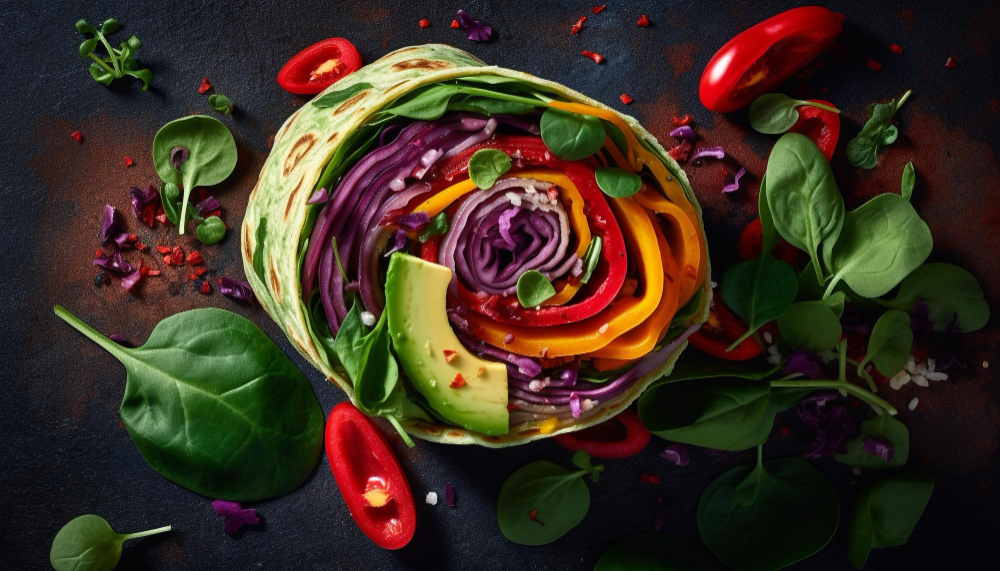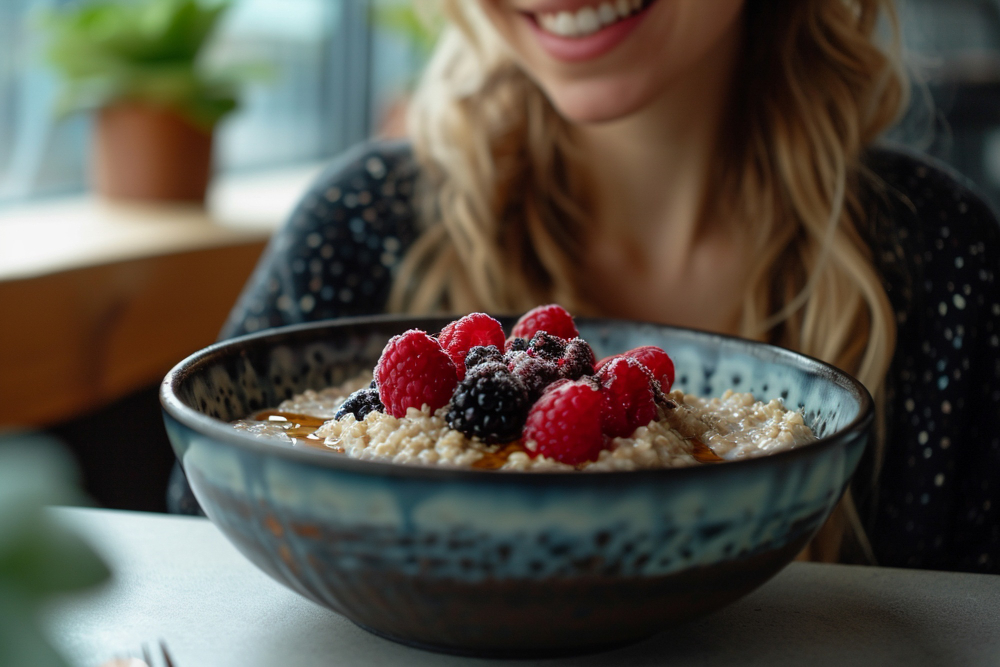There’s nothing quite like the satisfaction of crafting the perfect healthy meal. You’ve got your quinoa perfectly fluffy, your kale massaged to silky perfection, and your chickpeas roasted to crispy golden nuggets. You snap a photo for your story, take that first mindful bite, and then… twenty minutes later, you’re unbuttoning your jeans and wondering if your stomach has entered some kind of expansion mode.
Welcome to the club nobody talks about—the “I ate healthy and now I feel terrible” club. It’s more exclusive than you’d think, but way more common than anyone admits.
The Great Healthy Food Irony
Here’s the thing that nobody warns you about when you embark on your clean eating journey: some of the most nutritionally dense, incredibly good-for-you foods are also the biggest troublemakers when it comes to digestive comfort. It’s like nature’s cruel joke—the foods that make your body sing in the long run can make your stomach feel like it’s hosting a mariachi band in the short term.
Take Brussels sprouts, for example. These little green powerhouses pack more vitamin K than you know what to do with, enough vitamin C to make an orange jealous, and fiber that would make your grandmother proud. But they also contain something called raffinose—a complex sugar that your small intestine simply can’t break down. When these foods reach the colon, gut bacteria break them down through fermentation, releasing gas that causes bloating and pressure.
It’s not just Brussels sprouts playing hard to get with your digestive system. Broccoli, cauliflower, brussels sprouts and cabbage are among the most challenging to digest due to their complex fibers, which tend to ferment in the gut, causing gas and bloating. The entire cruciferous vegetable family—basically all those vegetables your mom told you were good for you—can turn your belly into a science experiment.
The Fiber Phenomenon: Too Much of a Good Thing?
Let’s talk about fiber for a moment. We’ve all heard the gospel of fiber—it’s supposed to be the holy grail of digestive health, right? And it absolutely is, but here’s where things get tricky. Experts recommend adults eat 14 grams of fiber for every 1,000 calories of food because fiber is critical to gut motility: Getting enough keeps food moving through the digestive system — which can reduce gas and bloating.
But—and this is a big but—your digestive system doesn’t come with an instruction manual, and if you’ve been living on white bread and processed foods for years, suddenly introducing a mountain of fiber is like asking a couch potato to run a marathon. Your gut bacteria, bless their tiny hearts, go into overdrive trying to process all this new roughage, and the result is often a symphony of digestive drama.
The key insight here is that fiber is absolutely beneficial, but the transition needs to be gradual. Think of it like introducing your antisocial cat to a house full of new people—too much too fast, and chaos ensues.
The Bean Scene: Nature’s Little Gas Factories
Ah, legumes. Beans, lentils, chickpeas—the protein darlings of the health food world. They’re affordable, sustainable, packed with nutrients, and unfortunately, they come with their own special brand of digestive entertainment. Beans—along with lentils, soybeans, and peas—are known as gas-causing foods. Although they contain more than enough protein, they also contain sugars and fibers your body can’t absorb.
Here’s what’s happening: beans contain oligosaccharides, which sound fancy but are basically just complex sugars that your small intestine can’t fully process. So they mosey on down to your large intestine, where your gut bacteria throw a little fermentation party. The byproduct of this party? Gas. Lots of it.
But before you swear off beans forever, remember that they’re nutritional powerhouses. The trick is in the preparation and the gradual introduction. Your digestive system can adapt—it just needs time and a little patience.
The Raw Deal: When Fresh Isn’t Always Best
Raw vegetables are having a moment. Raw kale salads, raw broccoli in Buddha bowls, raw cauliflower rice—the rawer, the better, right? Well, not necessarily for your digestive comfort.
When vegetables are raw, all those tough fibers and complex compounds are at full strength. Cooking breaks down some of these compounds and makes them easier for your system to handle. That doesn’t mean you should avoid raw vegetables entirely, but it might explain why that massive raw kale salad left you feeling like you’d swallowed a small garden.
Steaming, roasting, or even lightly sautéing your vegetables can make them much more digestive-friendly without sacrificing too many nutrients. It’s like giving your digestive system a head start on the breakdown process.
The Speed Factor: Slow Down, Speed Racer
Here’s something that might surprise you: it’s not just what you eat, but how you eat it. We live in a world of multitasking meals—eating while checking emails, scrolling through phones, or rushing between meetings. But your digestive system didn’t get the memo about modern efficiency.
When you eat quickly, you swallow more air, and you don’t give your body time to register what’s coming down the pipeline. Your stomach needs time to produce the right amount of acid, your pancreas needs time to release the right enzymes, and your brain needs time to communicate with your gut about what’s happening.
Eating slowly and chewing thoroughly (we’re talking at least 20-30 chews per bite) can significantly reduce bloating and digestive discomfort. It’s old-school advice that actually works.
The Portion Paradox
When something is healthy, our brains sometimes translate that to “I can eat unlimited amounts of this.” That massive salad with every superfood known to humanity might look virtuous, but your stomach has finite real estate, and your digestive system has processing limits.
Even healthy foods can overwhelm your system if you eat too much at once. Your stomach is roughly the size of your fist when empty—not the size of a mixing bowl. Eating until you’re uncomfortably full, even with healthy foods, is a recipe for digestive distress.
Timing Is Everything
The timing of when you eat certain foods can make a huge difference in how they affect you. That giant salad might be perfectly fine for lunch when you have time to digest it, but eating it at 9 PM and then going to bed might leave you tossing and turning with digestive discomfort.
Your digestive system works more efficiently when you’re upright and moving around. Gravity is actually a helpful part of the digestive process, and lying down immediately after eating can slow things down and contribute to bloating.
The Hydration Connection
Here’s something most people don’t realize: if you’re increasing your fiber intake (which you probably are when eating more healthy foods), you need to increase your water intake proportionally. Try to add fiber to your diet gradually, drink plenty of fluids, and keep up with regular exercise to avoid bloating and cramps.
Fiber absorbs water like a sponge. If you don’t have enough water in your system, that fiber can actually slow things down and contribute to constipation and bloating rather than improving digestive flow.
Food Combining: Science or Myth?
While the jury is still out on many food combining theories, there are some combinations that can be particularly challenging for your digestive system. For example, combining high-fat foods with high-fiber foods can slow digestion and potentially increase bloating.
That doesn’t mean you can’t have avocado on your high-fiber toast, but being mindful of how different foods work together can help you understand your personal digestive patterns.
Individual Differences: Your Gut’s Unique Personality
Here’s the truth that nobody wants to acknowledge: your digestive system is as unique as your fingerprint. What works beautifully for your yoga instructor friend might leave you doubled over in discomfort. Some people can eat a pound of raw broccoli and feel amazing, while others can’t handle a single floret without consequences.
This isn’t a flaw in your system—it’s just biology. Factors like your gut bacteria composition, enzyme production, stress levels, sleep quality, and even genetics all play a role in how you process different foods.
Making Peace with Healthy Eating
So what’s the solution? Do you resign yourself to a life of bland, processed foods to avoid digestive drama? Absolutely not. The key is finding your personal sweet spot—the way of eating that nourishes your body without making you miserable in the process.
Start by keeping a simple food diary. Note what you eat, how much, when you eat it, and how you feel afterward. Look for patterns. Maybe you handle cooked vegetables better than raw ones. Maybe you do better with smaller, more frequent meals. Maybe certain combinations work better for you than others.
Gradually introduce new foods and increase fiber slowly. If you’re looking to increase your fiber intake, here are a few steps you can take to limit how gassy you may be: Add fiber-rich foods to your diet gradually. Your gut bacteria can adapt to new foods, but they need time to adjust their processes.
Consider the preparation method. Soaking beans overnight and cooking them thoroughly can reduce their gas-producing potential. Steaming or roasting vegetables can make them easier to digest than eating them raw.
Pay attention to portions. Even healthy foods can cause problems if you eat too much at once. Your digestive system works better with moderate amounts of food at regular intervals rather than massive meals.
The Long Game
Remember, healthy eating is a long-term investment in your well-being, not a quick fix. Some initial digestive adjustment is normal when you’re transitioning to a healthier way of eating. Your body is incredibly adaptable, but adaptation takes time.
Don’t let temporary digestive discomfort discourage you from nourishing your body with good food. Instead, see it as information. Your body is communicating with you about what works and what doesn’t. Listen to those signals and adjust accordingly.
The goal isn’t to have a perfectly flat stomach after every meal—it’s to find a sustainable way of eating that makes you feel energized, satisfied, and comfortable in your own skin.
Finding Your Food Harmony
Eating shouldn’t be a battle between you and your digestive system. With a little patience, attention, and experimentation, you can absolutely enjoy nutritious, satisfying meals without the uncomfortable aftermath.
Start small, pay attention to your body’s signals, and remember that healthy eating is a personal journey, not a one-size-fits-all prescription. Your perfect healthy meal might look different from everyone else’s, and that’s not just okay—it’s exactly how it should be.
Your digestive system wants to work with you, not against you. Give it the time and attention it deserves, and it will reward you with better energy, mood, and overall well-being. The bloating phase doesn’t have to be permanent—it’s just part of finding your unique path to feeling your best.

Disclaimer: This content is for informational and educational purposes only and is not intended as medical advice. Individual digestive responses to foods can vary significantly, and what works for one person may not work for another. If you experience persistent digestive issues, severe discomfort, or have specific health concerns, please consult with a qualified healthcare professional for personalized guidance. This article should not be used as a substitute for professional medical consultation, diagnosis, or care.
Sources: Information in this article is compiled from various health and nutrition resources including UCLA Health, Mayo Clinic, Harvard Health, and peer-reviewed nutritional research as referenced throughout the text.



